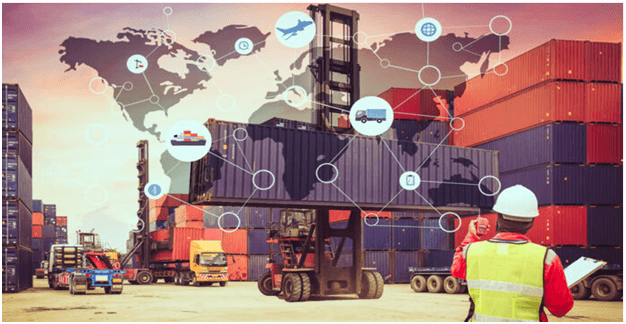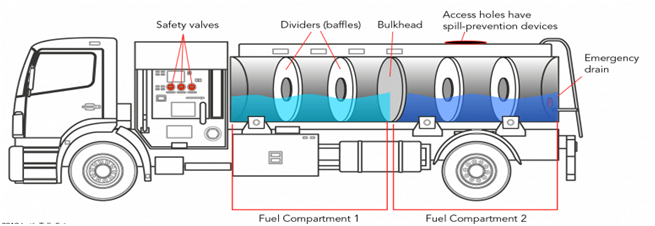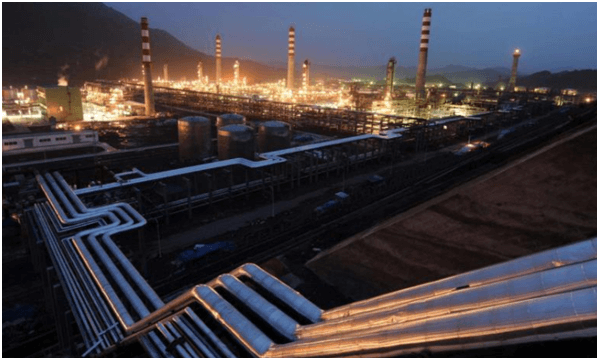Petroleum transport is moving derivatives such as fuel or petrol, and the transportation of crude. Petroleum products are transported via trucks, rail cars, pipeline networks, and tanker vessels. The strategy used to move the crude merchandise depends on the amount that’s being touched and its destination. The foremost necessary issues with moving crude merchandise units are pollution-related and else the likelihood of spillage. Oil is extremely arduous to scrub up and is extremely organogenetic to living animals and their surroundings.
Table of Contents
The Transportation of Oil
The extracted oil will need a method that desires varied transportation and storage technologies, typically mentioned as “midstream”. Oil is sometimes created in remote locations distant from wherever it will be consumed; thus, transportation networks are designed to maneuver the crude to refineries wherever it’s processed and ship the refined merchandise to wherever they’re planning to be consumed (For example a gas station). Storage facilities square measure want to balance the availability and demand of oil and refined merchandise.
Oil is usually transported by one of four options below:
- Pipeline – The foremost remarkable used variety of oil transportation is through oil pipelines. Pipelines are commonly used to move crude from the wellhead to gathering and method facilities and from there to refineries and tanker loading facilities. Pipelines would likely use less energy as compared to trucks or rail and they have a lower carbon footprint.
- Rail – Oil cargo transported by train has become a growing development as new oil reserves are known across the globe. The cost involved in building a railway is rather comparatively low prices compared to the construction of pipelines for long-distance shipping. However, speed, carbon emissions, and accidents are some vital drawbacks to rail transport.
- Truck – Whereas the foremost restricted oil transportation methodology in terms of storage capability. Trucks transportation usually is the last mode of transport within the transport methodology, delivering, delivering oil and refined crude merchandise to their meant storage destinations.
- Ship – Oil transport over land is not appropriate, oil is usually transported by ship. A typical three-thousand-barrel tank barge will carry the equivalent of forty-five rail tank cars at regarding a simple fraction of the value. Compared to a pipeline, barges are cheaper by 20-35%, wishing on the route. Tank barges are used to carry petrochemicals and gas feedstock’s to chemical plants. The drawbacks are usually sped and environmental issues. Oil is holding on in above-surface tanks.

The Importance of Transportation Logistics
Transportation is the key component of the supply chain occupies a fraction of the number inside the supplying value and takes a vital half inside the manipulation of supplying. Transportation is required for the movement of merchandise or freight to take place. Transportation is needed inside the complete production method, from producing to delivery, from the sales to the post-sales service delivery.
As the human population expands, it becomes progressively vital to recollect the results that accompany meeting our rising standards of living. In today’s busy world, it’s usually simple to overlook the impact that having our desires met directly will wear the setting and so the numerous species that live inside it.

A vital space of concern is the movement of oil and gas. This subject deserves magnified attention, particularly as a result of the planet’s resources become a lot of restricted and areas grow a lot of densely inhabited. As a result of the abundance of the earth of oil gets progressively scarce, it’s crucial to explore the safety and potency of the various ways that it’s transported at nice distances.

Using Tank Trucks for Transporting Oil
Trucks square measure the sole as a result of obtaining fuel onto gas stations. Imagine robust driving, would it be able to get gas right beside a terminus, in an extremely shipping port, or out of a pipeline. The size of these containers is smaller, which is similar to tank cars force by trains. These trucks can carry between ten to forty-five thousand tons of fuel from refineries or storage facilities to the pumps at a station.

Tank Truck Safety Features
In-tank trucks, the fuel is divided into several compartments. This compartment is can separate different grades of fuel. In that way, trucks are able to transport the different grades of fuel in one single trip. These trucks also go to the airport to refuel the planes and carry fuel, chamber oil, and varied residential fuels to homes that use them for heating or preparation. Trucks will go anyplace where there is a road connection. In this way, it creates the foremost convenient ways to transport oil merchandise. The cons for oil tanker trucks is it is a danger of spills throughout loading or unloading, or in traffic accidents. The reason is that tank trucks have a high center of gravity, and the height of the oil tanker is higher than the driver seat. It is because it contains heavy liquid sloshing around on high or high up! Because of this, tank trucks can tip over easily compared to other types of trucks. Tanker truck spills occur more commonly than train, ship, or pipeline spills. However, these spills from trucks tend to be smaller among compared to different types of transports.

Using Pipeline to Transport Oil
Pipelines are utilized in transferring the oil to the storage facilities from the wells to refineries and are viewed as the most cost-efficient in moving oil on land. From the wellhead section, it’s wired up across the land through a pipe and is discharged at its destination that generally could even work. These pipelines are not a simple solid line of straight pipe, they have varied elements on the pipeline. Though it is costly and time consuming to line up these pipelines, the operation cost is essential to low cost as compared to other modes of transportation. Also, the men required to maneuver this oil are not that abundant. Although these pipes are extraordinarily cost-efficient, some circumstances might not be able to apply and there is a lot of logic to use another methodology.

Conclusion
Transportation of oil is vital to ensuring the reliable and affordable flow of petroleum we all count on to fuel our cars, heat our homes, and improve the quality of our lives. Railroads, tankers, and pipelines are proven, efficient and economical means of connecting petroleum supply and demand. Safety in the transportation of oil is taking into consideration the amount of product moved and safer transportation method.
References
Celia Ang Ai Loon, DLSM. (2021). “Technologies for Efficiency of Freight Logistics”. Retrieved from SIPMM: https://publication.sipmm.edu.sg/technologies-efficiency-freight-logistics/, accessed 10/09/2021.
Gosselin, E. (2013). “Oil tanker spills: An FAQ”. Retrieved from: https://www.scq.ubc.ca/oil-tanker-spills-an-faq/
Antonina Kashan. (2019).” Tank Truck Safety Features”. Retrieved from: https://letstalkscience.ca/educational-resources/backgrounders/how-oil-moved-one-place-another, accessed 15/9/2021.
Jenny Chew Pooi Yee, DLSM. (2020). “Key Logistics Consideration for International Freight”. Retrieved from: https://publication.sipmm.edu.sg/key-logistics-consideration-international-freight/, accessed 10/09/2021.
Lim Shu Hui, ADPSM.(2017). “Impact of Shale Oil on Corporate Procurement in the Global Oil and Gas Industry”. Retrieved from SIPMM: https://publication.sipmm.edu.sg/impact-of-shale-oil-on-corporate-procurement-in-the-global-oil-and-gas-industry/, accessed 15/9/2021.
Trench, Cheryl J. (2001). “How Pipelines Make the Oil Market Work”. Retrieved from: https://www.iatp.org/sites/default/files/451_2_31375.pdf, accessed 15/9/2021.
Vanek, F. M., & Albright, L. D. (2008). “Energy systems engineering: Evaluation and implementation”. Retrieved from: https://studentenergy.org/transport/oil-transport/ accessed 15/9/2021.

